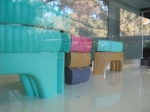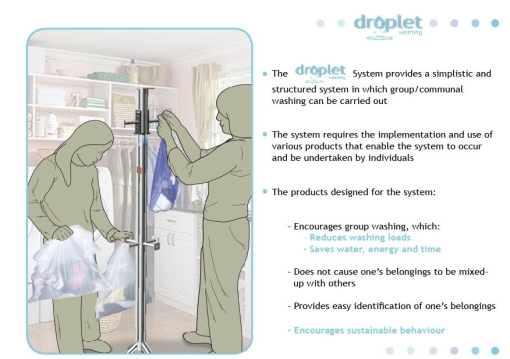My first semester at UNSW just ended. That was really fast! As I had academic advanced standing, I went straight into Year 3. I guess time flew because it was a pretty intense and exciting design course. Passion forced me to really indulge throughout the duration of the course. 12 weeks was technically short, and we had so much to do. In a nutshell, it was an exhilarating ticking bomb, which exploded into a satisfactory finale.
Basically, we had 2 main projects for this semester’s design studio and 2 other minor ones. Everything was targeted towards sustainability – a main concern in recent years. Each project involved market research into the brief which was done in groups (thankfully). From there, we further developed the brief individually and came up with several concepts. We then picked one concept and refined the aesthetical and functional aspects. We also had to look into the possible methods of manufacturing the product.
For the first main project, Millennium Development Goals, the brief was to improve the lifestyles of a poverty-stricken country. It was pretty challenging as technology was not really an option, because the product has to be cheap to manufacture and environmentally sustainable. My research group and I agreed to concentrate on children between the ages of 8 to 16 in East Timor. The design concept that I picked was a bag that will enable them to collect daily necessities (branches, fruits, etc) while on their way to school, and the form allows them to use it as a portable lap desk in school. The people in East Timor will be able to manufacture the product as the materials that I chose are readily accessible in their very own country. My aim was to create a simple design with flexibility in functions to suit their lifestyles.
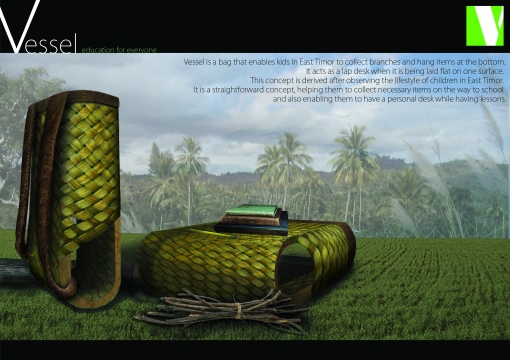
Vessel bag
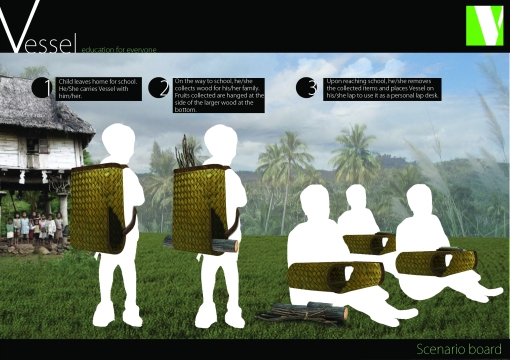
Vessel bag Scenario board
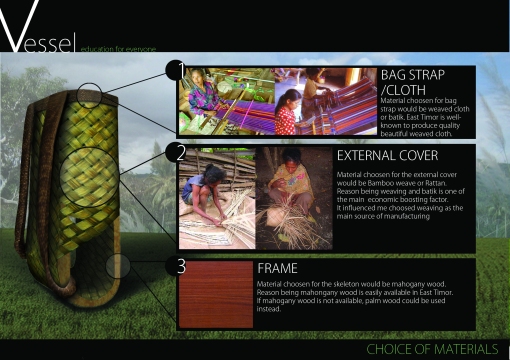
Vessel bag - Choice of Materials
Enabling Sustainable Communities was the second main project. I was allocated to a group, focusing on students’ lifestyles in Shalom College in UNSW. After a day of hanging out with the residents, I decided to make an improvement in the ‘clothes department.’ My aim was to discourage the use of laundry dryers, as statistical research proved that these mean machines are one of the highest energy consumers. Keeping environmental issues in mind, my design was a manually operable window blind that also acts as a clothes hanger. Another advantage is that it is financially friendly! However, this project was pretty tough without much guidance and with limited time constraints. From this project, I learnt that by changing one’s lifestyle, we eliminate environmental problems for the next generation.
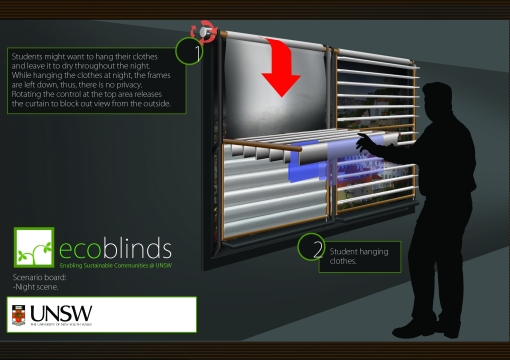
ecoblinds - Scenario board - Night scene
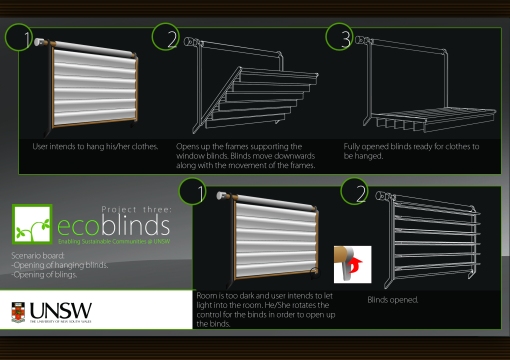
ecoblinds: Scenario board - Opening of blinds
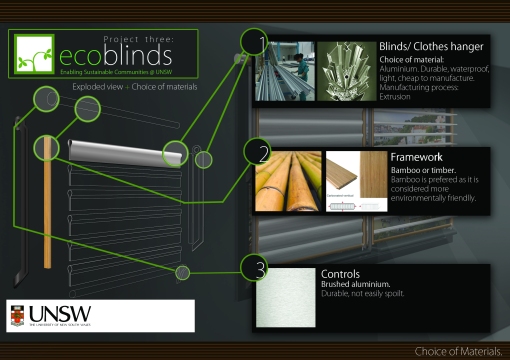
ecoblinds: Choice of Materials
Moving away from design studio, I also took a graphical course from COFA (College of Fine Arts), Marketing Research and Consumer Behaviour. Such courses allowed me to think of not only aesthetics but also marketability. As Industrial Designers, not only do we create, we must also sell. All in all, my first semester was really a great experience! Hopefully the remaining semesters will be as good, if not better.



